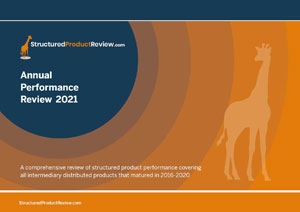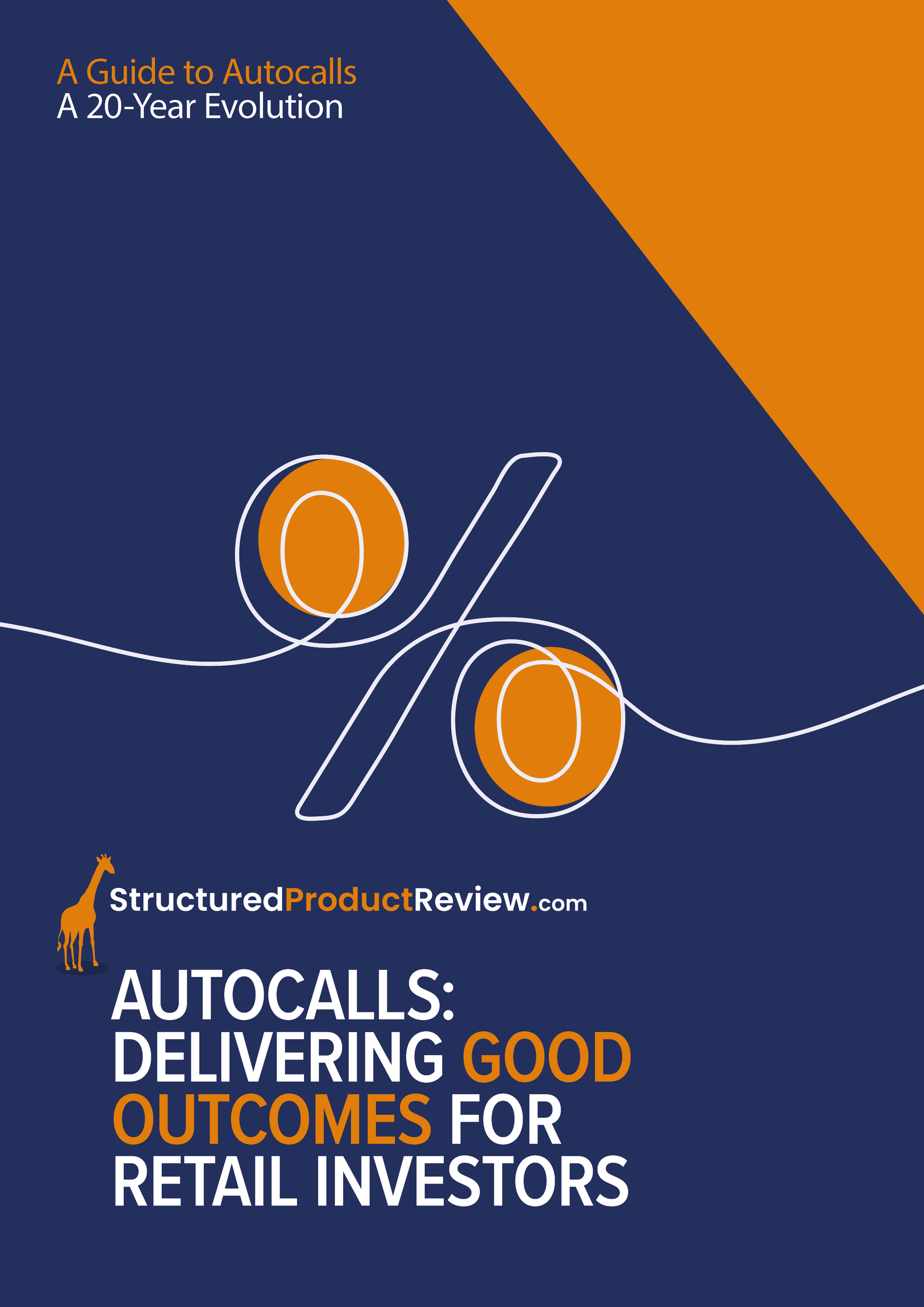27/09/2023
One of the historical justifications cited by some critics as to why they dislike structured products is because they have high charges. In this article we examine the argument and present a defence.
All investments have associated fees in one guise or another. These will reflect the product research, creation, distribution, custody, administration and management costs plus a profit element. In addition, there are likely to be intermediation and advice fees.
Whilst structured products are unique, for the sake of the debate we will consider their charges by refence to OEICS which are presumed to be an acceptable investment vehicle in the eyes of most.
Whilst initial charges for OEICs are now very rare, they have ongoing charges which can be as low as 0.01% and as high as 2.8% p.a, they typically range between 0.64% and 0.94% p.a [1]. In the same way that a structured product needs an authorized custodian to hold the note, OEICS now typically have unbundled charges requiring the investor to pay sperate custody and administration fees in the form of platform fees. Platform fees for OEICS range from as low as 0.15% p.a to as much as 0.45% p.a. All told, whilst there are of course exceptions, this gives us total costs of OEICS of between 0.79% and 1.39% p.a plus intermediation and advice fees.
When a structured product is created, the provider will incorporate into the terms, fees that cover all costs, for the duration of the investment, other than (since 2012) intermediation and advice fees. The provider fees are therefore defined at the outset and consequently reflected in the returns offered. For over a decade the approximate fees incorporated have been disclosed in product literature. Typically, higher fees translate to less competitive returns being offered. The fees incorporated into retail structured products have ranged from 0.5% to 3.75% depending upon several factors including anticipated, minimum and maximum duration. The typical charge incorporated into FTSE 100 / FTSE CSDI linked products in 2023 was 1.5% [2]. But aside from the adviser charges, that’s it. There are no ongoing fees.
Admittedly, some structures could mature after as little as one year if market conditions are favorable, some not until the second anniversary, but some could be in force for as long as seven, eight or even ten years if market conditions are unfavorable. In such unfavorable circumstances the investor will not be asked to pay more for the custody and administration services being provided for the extended term.
So if we consider an OEIC with an OCF of 0.64% p.a on a low-cost platform at 0.15% p.a then over a two-year period we have total charges of 1.58% and 2.37% over three years and this rises each year and of course is applied to fund value rather than the original investment value.
Of course, it’s far from a perfect comparison but given these figures it’s clear that structured products in general don’t have high charges and the longer the structure is in force the more competitive they become. And of course with autocalls a longer duration is typically a function of the performance of the underlying being less than ideal and this of course could be reflected in the performance of other investments which apply ongoing charges.
Furthermore, if market conditions dictate that a structure runs for its maximum duration and simply returns capital, that return of capital will be net of product charges.
Whilst this discussion relates to structured product charges and not advice charges it would be remiss of us not to make further reference to adviser / intermediation fees which of course vary wildly. Whether advice fees could be initial only, initial and ongoing, or ongoing only – at a fixed, or floating rate will impact any analysis. There is of course more work involved in managing a portfolio of regularly maturing structures, compared to holding passive OEICs and intermediation fees could reflect this. Ongoing intermediary advice fees with no reinvestment fees could prove to be lower cost than intermediation only fees depending on multiple factors which again, include market conditions which dictate the ultimate duration of the structures. It is therefore difficult to compare, and as to acknowledge that regular re-investment following successful outcomes is likely to cost more than holding completely passive, open-ended investments.
The counterparty bank issuing the note behind the product will of course be seeking to profit from its activities and in this respect, we wish them every success. For the charges debate we will not consider the extent to which a bank will profit from their activities, any more than we would consider the extent to which corporate bond issuers used in a fund will benefit from their borrowings. The institutions offer contractual terms which are acceptable to the investor and it's the cost of acquisition and ownership we’re interested in.
In summary, some historical structured products no doubt had high charges but for more than a decade all structures have disclosed the plan manager, custody and administration charges and at an average fee of 1.5% for a typical FTSE autocall, even if it matures after just two years – thereby delivering success, the charges applied at outset cannot really be described as high.
If you disagree or have more to add to the debate, please contact us at enquires@structuredproductreview.com
[1] FE Analytics
[2] StrucutredProductReview.com
Strucutred investments put capital at risk.
Also in this section
- 2,000 and counting
- Q2 2024 maturity results
- 20 years of autocall maturities
- Product focus - June 2024
- Fixed income or interest?
- Maturities of the month - May 2024
- The barrier debate - revisited
- Product focus - April 2024
- Maturities of the month - April 2024
- Time to call
- I don't believe markets are ever too high for Structured products!
- Notes on counterparty exposure
- Return of Nikkei
- Q1 2024 issuance
- Q1 2024 maturity results
- Structured Products – AAAAAGH!
- Hop in CIBC
- Re-enter Santander
- How to build a financial fortune - revisited
- Issuance in 2023
- Where's the risk?
- Questionable offerings
- Challenging the case against structured products - 'Loss of dividends'
- Navigating the investment landscape
- Challenging the case against structured products - Counterparty risk
- 6-year autocalls approaching final destination
- 1,750 FTSE capital at risk autocall maturities
- The leopard that changed her spots
- Q3 2023
- Challenging the case against structured products - Keydata
- Dilemmas for UK IFA's and the unique role of Structured Products
- 'High charges'
- Precipice bonds
- Intro
- FTSE 100 Contingent Income
- Indexing the indices
- Something different
- Investing through volatility
- 100 10:10s
- The best or worst?
- The 10%/25% 'Rule' that never was
- Structured products and the yield curve
- Fixed income: Capital at risk?
- Prospects for UK inflation - and fun with A.I!
- The Barrier Debate
- More Deposits for now
- Last of the Americans
- What if?
- Time heals all wounds, we hope...
- How to diversify portfolios using structured products?
- The Proof Is In The Pudding...
- Debunking Structured Misconceptions
- 1,500 FTSE Capital-at-Risk Autocall Maturities
- Q3 2022 Maturity Results
- What do we prefer?
- Deposits vs Capital ‘Protected’
- There’s time yet…
- Where did you invest your clients?
- A Six-Month Reflection
- Return of the Rev Con
- Happy 2nd Birthday FTSE CSDI
- Q2 2022 Maturity Results
- The best and worst yet still the best
- Critique my Suitability - Mariana 10:10 Plan June 2022 (Option 2)
- 10/10 for 55 10:10’s
- Q1 2022 Maturity Results
- 'How to build a financial fortune': a follow up
- Critique my Suitability - Mariana 10:10 Plan April 2022 (Option 2)
- 2021 Capital-at-Risk Autocall Maturity Review
- An unwelcome return...
- CSDI's First Birthday
- Bon Anniversaire
- Introducing the FTSE Custom 100 Synthetic 3.5% Fixed Dividend Index
- Q3 2021 Maturity Results
- Critique my Suitability - Mariana 10:10 Plan October 2021 (Option 2)
- Blurring the lines...
- Beware of false knowledge; it is more dangerous than ignorance
- Good news, bad news...
- Certainty is Certainly a Benefit
- Critique my Suitability - Mariana 10:10 Plan September 2021 (Option 2)
- A Twenty-Year Progression
- Q2 2021 Maturity Results
- Nine 8:8s Post Positive Returns in Falling Markets
- Critique my Suitability
- Q1 2021 Maturity Results
- Morgan Stanley’s Marvelous Maturity Medley
Current Products
We review the UK's retail structured investment sector, providing pertinent support for Professional Advisers and relevant research tools.
View all ⟶


